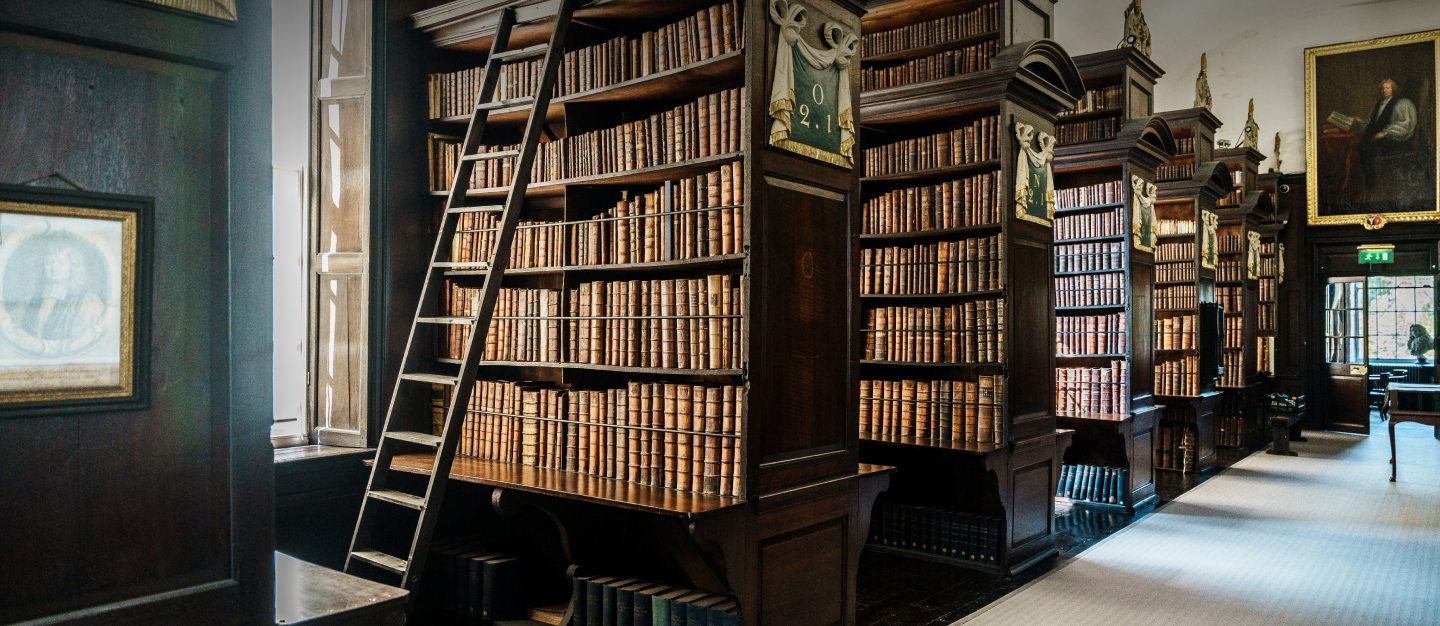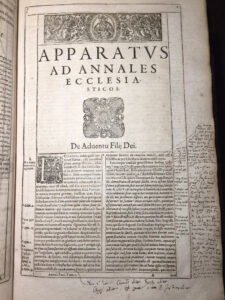
Scholarly Scribbles: Isaac Casaubon’s Marginalia
A lot of books that survive from the earliest centuries of printing contain handwritten annotations by contemporary readers. One reason why these annotations interest us is because they offer a seductive glimpse of what ‘real’ individuals were thinking.
Early modern authors’ published works were varnished with layer after layer of artifice: fawning dedications to patrons, nauseating bits of praise from the author’s friends, euphemisms designed to guard against censorship. The same authors can seem less formal, less guarded, when we look at their annotated books.
This is certainly true of the French scholar Isaac Casaubon (1559-1614). Casaubon was a prolific annotator, and his books were coveted by his friends and admirers for that reason. One such admirer was Edward Stillingfleet, whose personal books now form part of Marsh’s Library, and who ensured that Marsh’s now has more of Casaubon’s books than any institution besides the British Library.
Until now it had been assumed that Stillingfleet got them from Isaac’s son, Meric, but Meric might not have been his only source: as I found when I visited Marsh’s, several of Isaac’s books are also annotated by Patrick Young, the Librarian to James I and Charles I, suggesting that they could have been expropriated from the Royal Library by Young and then sold on to Stillingfleet after Young’s death.
Casaubon’s notes give us a behind-the-scenes view of the preoccupations that shaped his published works — preoccupations which he was reluctant to divulge in the works themselves. Take, for instance, Casaubon’s great 1614 study of early Christianity, Essays on Sacred and Ecclesiastical History. Casaubon’s Essays were a response to the work of the Roman Catholic historian, Cardinal Cesare Baronio.

This is vol. 1 in Marsh’s Library of Casaubon’s copy of Baronio’s Annales ecclesiastici, 12 vols (Mainz, 1601-1609).
Casaubon insisted in public that his only goal in refuting Baronio was to establish what had really happened in the first decades of Christianity, on the basis of the ancient sources alone. This meant putting aside theological disputes between modern Protestant and Catholic authors. To reinforce this impression, Casaubon made comparatively few references to modern authors in the printed Essays. But the margins of his annotated books tell a different story: they show just how often Casaubon was reading with one eye on the present.
A clear example of this can be found on the first page of Casaubon’s personal copy of Baronio’s History of the Church, as shown in the image. Baronio discusses early Christian beliefs about a question on which Catholics and Protestants often differed: whether it was possible to achieve salvation without knowing or believing in Christ.
Casaubon’s handwritten annotations show him citing several modern, Protestant authors who did not appear in the published Essays, such as the Lutheran polemicist, Martin Chemnitz. When we study these modern authors’ works, we can see that their arguments affected what Casaubon was saying about Christian antiquity — but without this annotated book, we might not even know that he was reading them.
Casaubon’s idiosyncratic, shaky handwriting is fiendishly difficult to decipher, but it is worth the effort as it provides a rounded overview of all the factors which shaped the reading of an important scholar of the late sixteenth and early seventeenth centuries.
Dr Nicholas Hardy
Munby Research Fellow in Bibliography
Cambridge University Library







